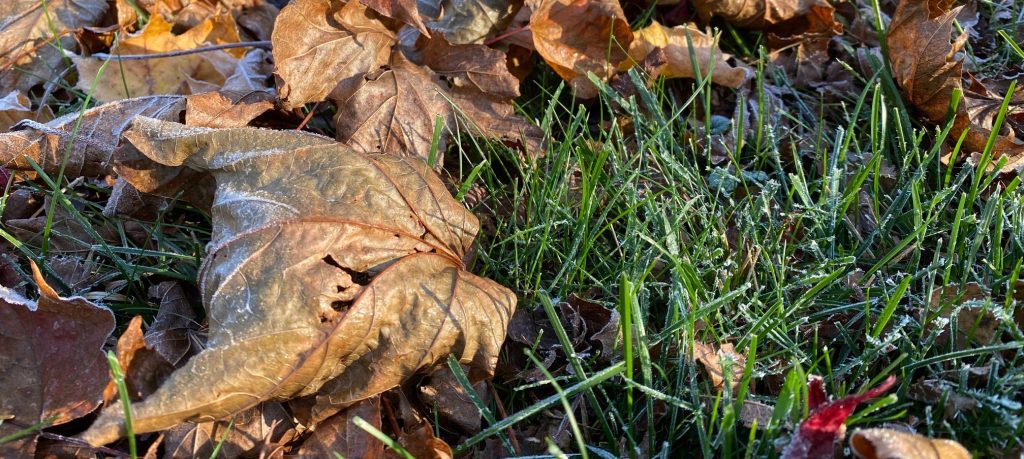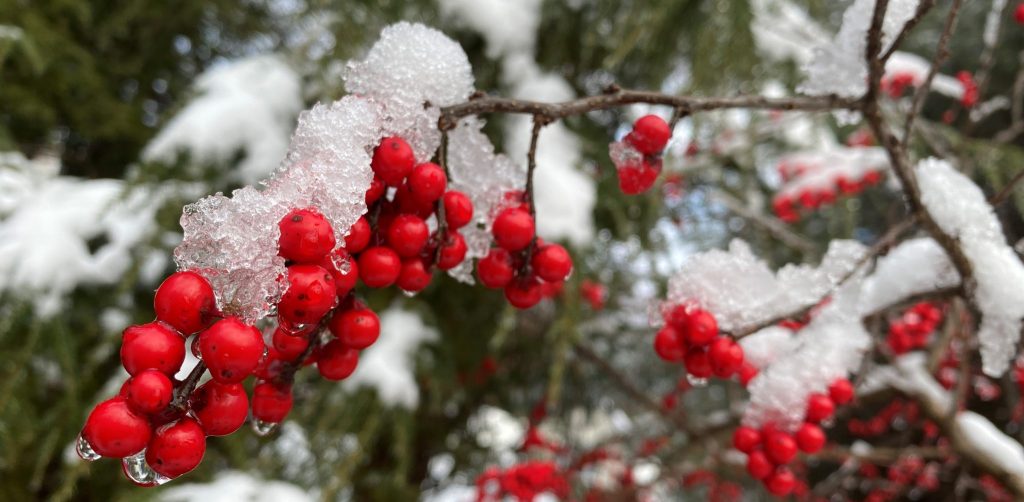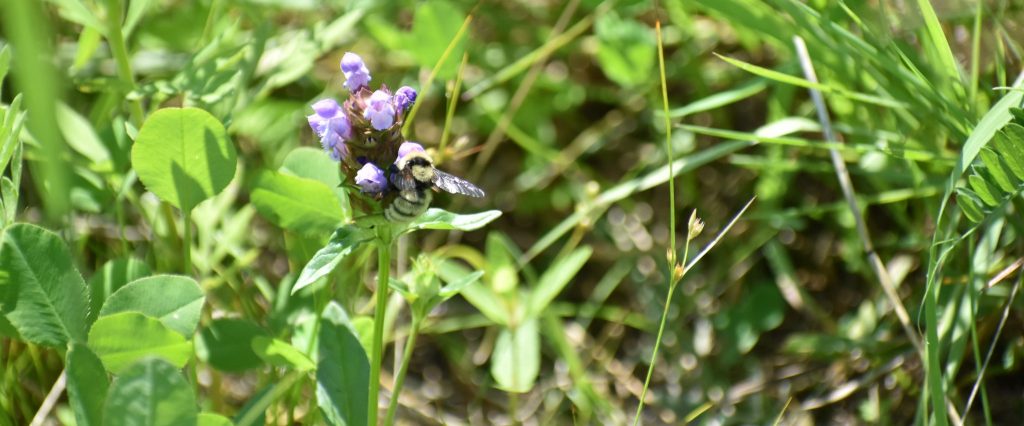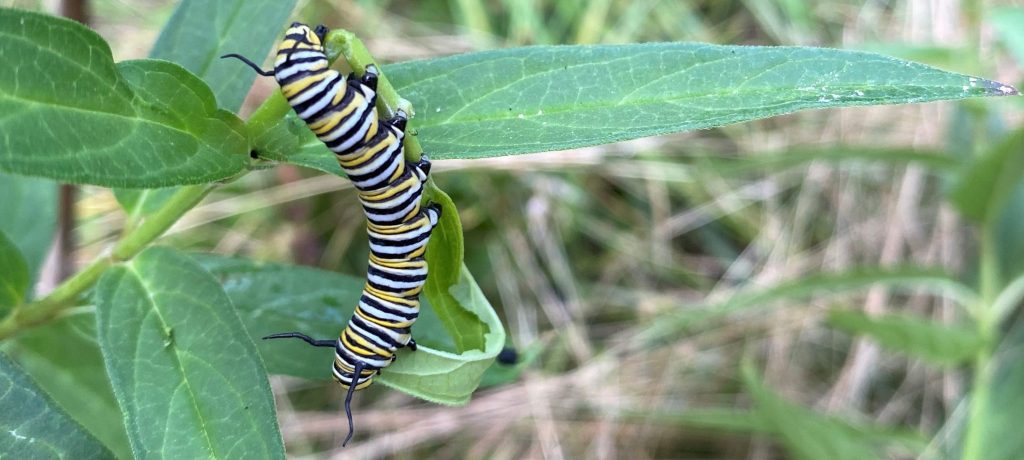In its broadest sense, land stewardship is the act of preserving the conservation values and protections obliged to the LLCT and RLF at the time a conservation deed, restriction, or trail easement is given into our care. With these transactions, LLCT becomes a lifetime steward of the land, serving to protect the rural character of Lincoln.
Stewardship activities of our staff, Stewardship Committee, and volunteers cover many areas of work from planning and management to monitoring and enforcement. The Stewardship Committee meets regularly to review monitoring reports and other land management responsibilities.
While the LLCT, Lincoln’s Conservation Commission, and other Lincoln-based conservation organizations are charged with the stewardship of Lincoln’s protected lands, it is our collective responsibility to take care of our precious, natural resources.
In 2022, LLCT and the Lincoln Conservation Department updated the Invasive Species Brochure, which is a colorful guide to the invasive (and likely invasive) plant species found in Lincoln, along with management tips. The Guide is available online as a PDF. Printed copies are also available at the LLCT and Town Conservation offices.
In 2023, LLCT developed a printed brochure and complementing online resources on gardening for climate change mitigation, climate change resilience, and biodiversity. See below in the climate change tab!
Stewardship Activities
Climate Change
Climate change is the greatest environmental crisis of our time, impacting Lincoln’s conservation lands as well as the rest of the world. Both the LLCT and the RLF aim to do what they can to respond in helpful ways, consistent with being Lincoln-focused organizations. Read LLCT and RLF’s Climate Change Statement (November 2021) here.
Below find content from LLCT’s 2022 pamphlet on creating and managing outdoor spaces that mitigate climate change (reduction of carbon emissions), build resiliency to climate change, and promote biodiversity and ecosystem health. Healthy, biodiverse ecosystems are better equipped to withstand climate change and in turn also help sequester more carbon. Organized seasonally, these resources are intended to be referenced in conjunction with a paper resource which is available as a PDF here. Don’t have a garden? No problem. There are plenty of ways to get involved, from supporting town-wide conservation efforts to lowering carbon emissions at home.
Autumn
- Leave the Leaves. Mitigation and Resiliency. Decomposing leaves provide habitat for overwintering insects, deposit nutrients and carbon into the soil, and regulate soil temperature and moisture.
- More than 90% of caterpillars drop down directly to the tree’s base. They conduct their whole life cycle either on the tree or in the leaves around it. Prioritize leaving leaves around trees and plant groundcovers around the tree to improve the quality of the habitat at its base.
- Queen bumble bees hibernate in rodent burrows or other cavities. Leaf litter and vegetative debris helps insulate them during the winter.
- If leaving the leaves is not possible, hand raking into a compost pile is the next best option. Although raking disturbs overwintering caterpillars, some will still survive in the leaf pile, and carbon will return to the soil. Let brush piles decompose. Burning them releases more carbon in to the atmosphere than decomposition.
- As a last result, mow leaves into the lawn. This returns nutrients to the soil. Electric equipment reduces carbon emissions and noise pollution.
- Leave the Stems. Resiliency. Wildlife, e.g. native bees like mason bees use perennial stems for shelter. Seed heads and berries feed birds and small mammals. These stems also create winter interest in the garden by adding texture and color to the space. Retained stems ensure the completion of life cycles for insects.
- Plant Native. Mitigation and Resiliency. Fall is a great time to plant native shrubs, trees, and perennials. Their long roots store carbon deep in the soil, and they support wildlife by providing food and shelter. In the summer, take note of the sunlight, soil composition, and moisture in the area you want to plant. Plant early enough in the fall for plants to settle in. They’ll be able to take advantage of early spring rains.
- Manage Invasive Plants. Mitigation and Resiliency. Compost invasive plants to return organic matter and carbon to the soil. Before composting, research the species you are working with and follow best management practices to ensure the plant does not survive in or reseed from the compost pile. Invasive plants are detrimental to healthy ecosystems, hogging resources and providing sub-par nutrition to wildlife.
- Empty Rain Barrels. Resiliency. Barrels can crack if water inside freezes. Store inside (a shed or garage). If storing outside, ensure snow and rain cannot enter the barrel and that they are weighed down/secured.
Winter
- Leave Trees and Snags. Mitigation and Resiliency. Only remove trees if necessary. Native trees, particularly oaks, provide immense ecological services. If a tree needs to be removed, retain a wildlife snag (at least 12 feet of trunk standing). Snags are critical wildlife “condominiums” for many animals, including woodpeckers. The snag will decompose slowly and safely, returning much of its carbon back to the soil. Generally snags of 12-15 inches diameter have the greatest value.
- Install a Bird Bath. Resiliency. Solar-heated bird baths support birds by providing clean, running water. Make sure to clean the bird bath regularly and pay attention to any health advisories (avian flu).
- Plant for Wildlife. Resiliency. Berries such as American Holly and Winterberry provide critical food for birds in the winter. Seed heads that have been left overwinter continue to feed wildlife throughout the season.
- Manage for Invasive Plants. Resiliency. If the ground is not too frozen, winter can be a good time for invasive species work, as it is easier to see through the brush. Make sure to positively ID plants before pulling!
Spring
- Resist the Urge to Burn. Mitigation and Resiliency. Burn piles release more carbon into the atmosphere than letting brush decompose into soil. Decomposing brush piles also create habitat, sheltering small animals from predators and the elements. Ensure brush piles remain on your property. Dumping of vegetative material on conservation land is strictly prohibited. Burn brush only when absolutely necessary and follow all fire department guidance.
- Let Lawns Grow. Mitigation and Resiliency. Lawns are an ecological dead-zone, providing little biodiversity or carbon storage. Decrease lawn area by planting deeply rooted perennials, shrubs and/or trees.
- A tree planted with a native groundcover creates a large area with high ecological value that is low maintenance. Trees provide shade too. Plant away from houses, or choose smaller species to plant near structures. New solar panels are very efficient and can often generate sufficient energy even if partially shaded.
- If retaining lawn, supplement the grass with low-growing flowers such as Self-heal, Violets, and Clover. Mow less frequently (every few weeks) and with a higher blade height (aim for 5 inches). Use electric mowers and trimmers to reduce carbon emissions and noise pollution. Leave grass clippings on the lawn to return nutrients and carbon to the soil. When possible, mow earlier in the day, before nocturnal animals begin to stir.
- Install a Rain Barrel. Resiliency. Catch roof run-off to conserve water use. Water plants deeply but infrequently to support strong roots. Consider planting a rain garden in low areas where water tends to collect. This will help with run-off and standing water issues. Terrace sloped areas to reduce erosion.
- Prune Cautiously. Resiliency. If cutting back perennials, leave 1-2 feet as some native bees like mason bees use old stems to nest in early spring.
- Go Pesticide Free. Resiliency. Many pesticides are harmful to people and insects. Fertilizers can increase nutrient load and impact the water supply. For mosquito management, reduce standing water sources so they can’t lay eggs. Create garden spaces and protect habitat that support dragonflies, natural mosquito predators.
- Support Wildlife. Resiliency. Install nest boxes for cavity-nesting birds. Check window wells for frogs and toads, and cover them to prevent animals from being trapped. Continue to offer a bird bath.
Summer
- Turn off the Lights. Mitigation and Resiliency. Light pollution negatively impacts nocturnal wildlife. Light at night is a problem year round, but is particularly egregious in the summer. For example, fireflies need darkness to successfully breed. Plus, reducing lighting reduces electricity use. Eliminate unnecessary outdoor lighting. Use shielded lights and motion detectors on lights that must remain active for some of the night. Install curtains to keep light inside the home. Use red lights, which are proven to be the least disruptive to fireflies.
- Water Responsibly. Resiliency. Let lawns go dormant, and only water sensitive or newly added plantings. Water at dusk or dawn to reduce evaporation. Drip irrigation, when properly installed, is the most efficient watering method. Whenever possible, use water from rain barrels. Although Lincolnites use both town water and well water, ultimately we are all sharing one resource.
- In the Garden. Resiliency. To prevent mosquito breeding, clean birdbaths every few days and remove sources of standing water. Continue composting food and yard waste, adding material to gardens to increase soil health. Continue to plant native and remove invasive plants. No yard? No problem. Container gardens can offer great biodiversity in a small area, and can decorate a balcony, porch, or walkway.
More Ways to Make a Difference
- Support Conservation. LLCT and other local conservation organizations seek to promote climate-friendly practices in our open spaces and throughout the community.
- Around the Home. Learn how to increase your home’s energy efficiency and lower its carbon footprint.
- Lincoln’s Green Energy Committee offers many programs and resources on energy efficiency, renewable energy, and electrifying homes.
Land and Trails
LLCT helps to manage more than 2,000 acres of land and 80 miles of public trails in partnership with Lincoln’s Conservation Commission. Careful, thoughtful planning and management strategies protect the integrity of the land.
Land Management
Open spaces and natural places are dynamic, living systems that require varying levels of intervention to remain healthy, productive components of the surrounding ecosystem. LLCT, the Conservation Commission, and other partners mow open fields annually to facilitate healthy habitat for a variety of insects and birds, and sometimes undertake restoration projects to enhance the conservation value of the land. Non-native, invasive plant removal at field edges is also a priority for LLCT throughout the year.
Trails
Trails are checked regularly by volunteers in the LLCT, Adopt-A-Trail program in partnership with the Conservation Commission. Maintenance occurs regularly to keep the trails safe and passable. The trail work includes removing overgrowth and fallen trees, replacing trail markers, maintaining wooden bridges and crossings, removing non-native, invasive plants, and more.
With every action, fostering a mutual understanding of shared conservation values with landowners, our community partners, our members, and the public is at the forefront of our work.
Monitoring
LLCT currently holds 88 conservation restrictions, permanently protecting more than 560 acres. As stewards of this conservation land, our commitment is to understand the land’s existing and historical conditions, monitor any changes over time, and take action to restore conservation values and protections when needed.
LLCT creates a Baseline Inventory Report for each newly acquired conservation restriction or deeded property. The report includes text, photos and maps to help LLCT track changes to each property’s physical and ecological features over time.
LLCT conducts an annual monitoring visit to each property, which begins with a review of the Baseline Inventory Report and subsequent monitoring reports. This annual visit is LLCT’s opportunity to note any significant changes, natural or human caused, which may impact the conservation value of the land and the protections put in place. The visit enables LLCT to connect with and build long-term relationships with our conservation partners, the landowners of the property.
Sometimes a landowner with a conservation restriction will violate the terms of the CR. If this happens, the LLCT trustees review the potential violation and contact the landowner to move forward with a proposal that restores any loss of conservation value on the protected land.
To avoid a possible violation, contact us before you do anything to disturb your protected property. We are always available to answer questions, and to clarify expectations and obligations, which can sometimes be confusing, especially for new owners.
Volunteer
To find out more about our Adopt-A-Trail program and if you are interested in becoming a stewardship volunteer with LLCT, please visit our volunteering page.






